SELECTING A HOTEL IN A FOREIGN CITY, especially an Asian city, is a crap-shoot—even with Booking.com. We were lucky with Hotel Palace in Gyeongju and we really hit the Jackpot here in Daegu. Not only did we get a great rate, Rivertain Hotel comes with Seo Yeon (So Young), an adorable English-speaking desk clerk. She let us check in an hour early and gave us directions to a local supermarket and promised to help us get around.
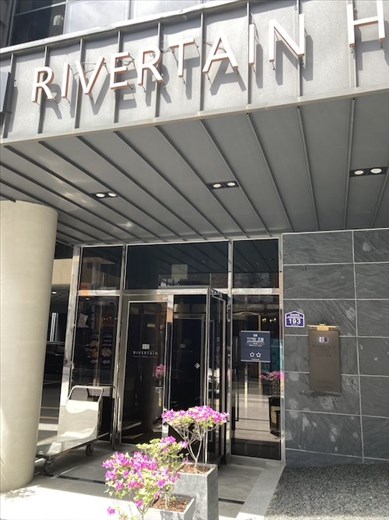
The Jackpot—Rivertain Hotel
There isn’t much do recommend Korea’s 4th largest city for foreigners—it is more-or-less a transportation hub and everything of interest is at least twenty kilometers outside of town. But Daegu is the nearest base to visit Haeinsa Temple, our reason for being here, and we were counting on Seo Yeon to help us out. She was able to arrange a taxi to drive us the 65 kilometers to Haeinsa Temple, wait for two hours and bring us home again. I think she even may have bargained the price down, bless her little heart.
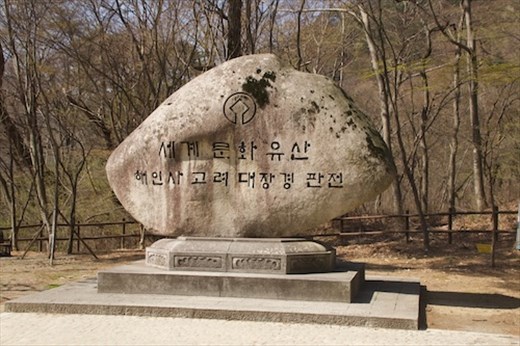
Haeinsa Temple Complex and Tripitaka Koreana WHS
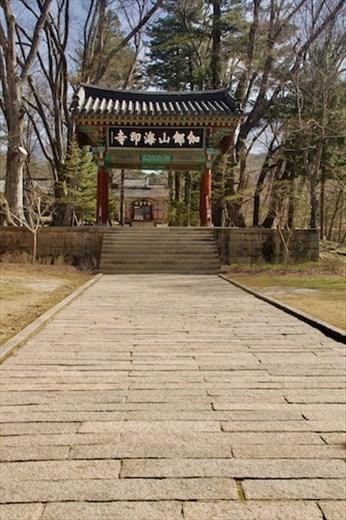
Entry Gate to Haeinsa Temple
Haeinsa Temple isn’t JUST another Buddhist temple, although its location high on Mount Gaya in Gayasan National Park would make it worth a day trip from Daegu. Haeinsa Temple is home to the Janggyeong Panjeon, four unique buildings where the Tripitaka Koreana, more than 80,000 engraved woodblocks from the mid-1200s containing the most complete collection of Buddhist Scriptures, are stored. I think this is the Buddhist equivilent of having all the printing plates from the original Gutenberg Bible, but 200-years before Gutenberg printed his Bible! This isn’t a printed Buddhist Scripture but the woodblocks could still be used to print one exactly like the original—not so with Johannes’s book.
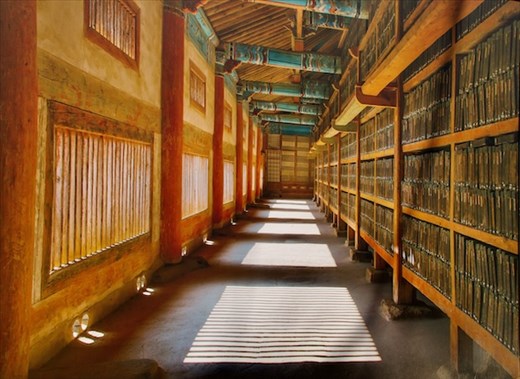
Inside the Janggyeong Panjeon (photo of Haeinsa photo)
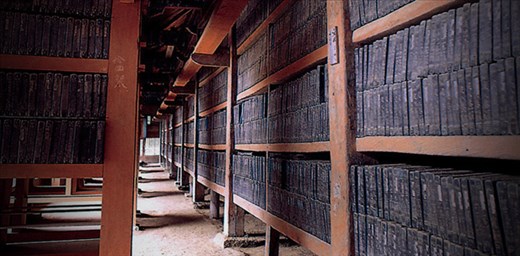
81,340—count them if you don't believe us (internet photo)
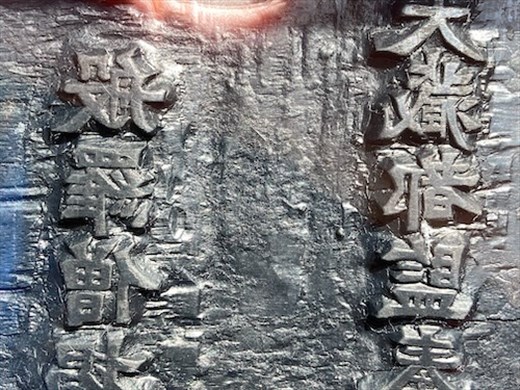
Original Chinese characters (photo of Haeinsa photo)

Page printed from Tripitaka Koreana woodblock (internet photo)
Just for fun, here are some facts. The Temple, first constructed in 802, was rebuilt in 1818 after being destroyed by fire. The four buildings of Janggyeong Panjeon where the Tripitaka are stored dates from the 15th Century and was remarkably spared by the 1817 fire. If all 81,340 woodblocks in the Tripitaka Koreana were laid end-to-end they would stretch 37.5 kilometers—more than halfway back to Daegu—and the entire collection weighs in at a whopping 280 tons. The woodblocks are made from the wood of cherry and wild pear trees which had been soaked in sea water for two to three years, then boiled in salt water before carving began. The delicate Chinese characters were carved in almost identical style and then covered with three coats of lacquer. The corners of each block were decorated with copper plating to keep them from warping. These things were made to last a while!
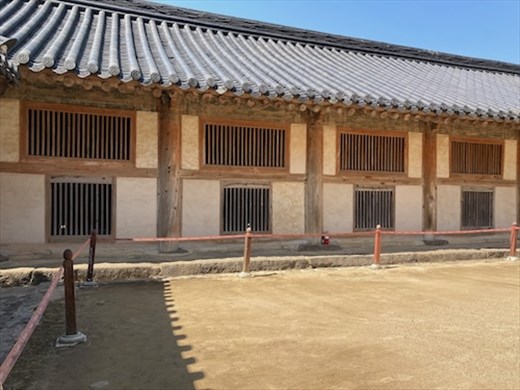
One of four Janggyeong Panjeon bulidings
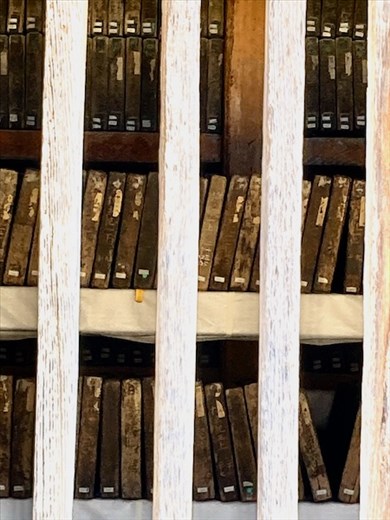
Tripitaka Koreana through the slots
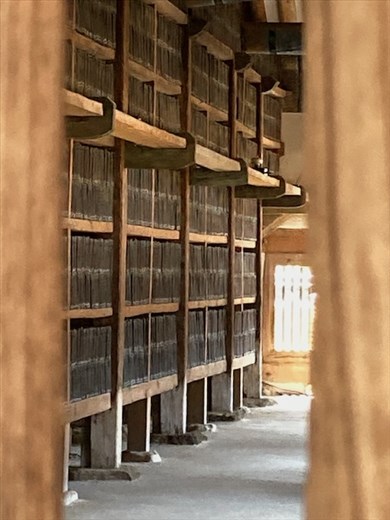
Our most comprehensive photo of Tripitaka Koreana
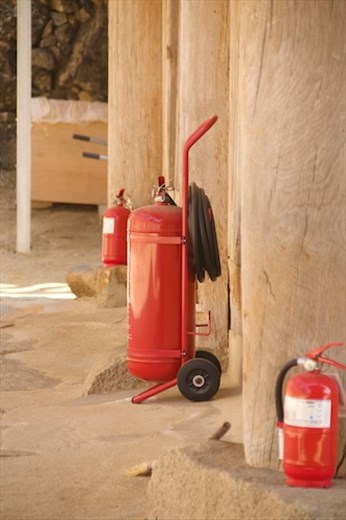
Buddha insures against fire but it pays to be prepared
My first thought was why are such rare and important artifacts stored in such an unsecured and vulnerable location? As it turns out the 15th Century methods have been sufficient. The buildings are designed to provide easy access to the woodblocks for monks and scholars while the roof shields them from the elements, the open slats allow for ventilation and the composition of the floors prevents moisture and keeps pests at bay. I guess Buddha insures against of fire and theft.

Plenty of room to move around (official photo)
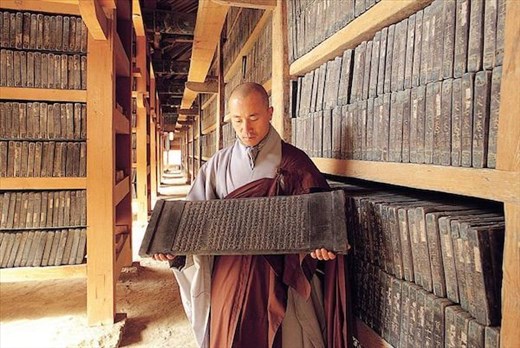
This is what it's all about—Tripitaka Koreana woodblock (offiical Photo)
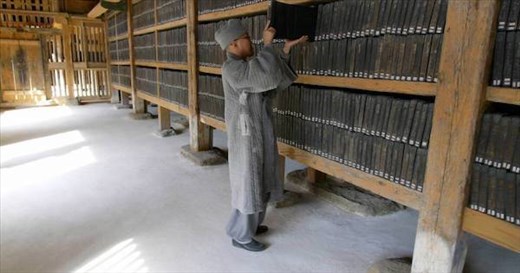
Put it back in the right place (official photo)
Only authorized monks are permitted inside Janggyeong Panjeon and photographing the stored woodblocks through the slated “windows” is problematic so many of these pictures are from various web pages. It’s easy to tell which are our own.
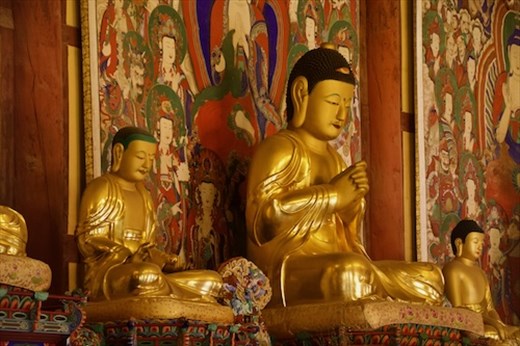
Haeinsa is stll a Buddhist temple

Say a little prayer, Haeinsa Temple

Birotap Three-story Pagoda
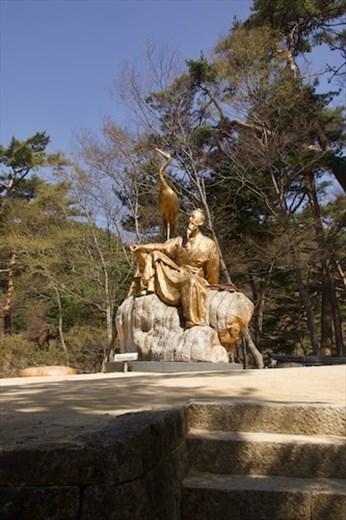
Hill of the Scholar
While Haeinsa Temple isn’t JUST another Buddhist temple, it is still a Buddhist temple. A long walk from the first gate leads to the first of three levels of temple buildings complete with pagodas, prayer flags, devout monks, drums, tinkling bells and chanting with the Janggyeong Panjeon on the top level. A recent addition caught my eye—a golden statue on the Hill of the Scholar looks exactly like I picture Confucius. There is even a gift shop/restaurant with featuring Strawberry Smoothies, perfect for the long ride back to Daegu.